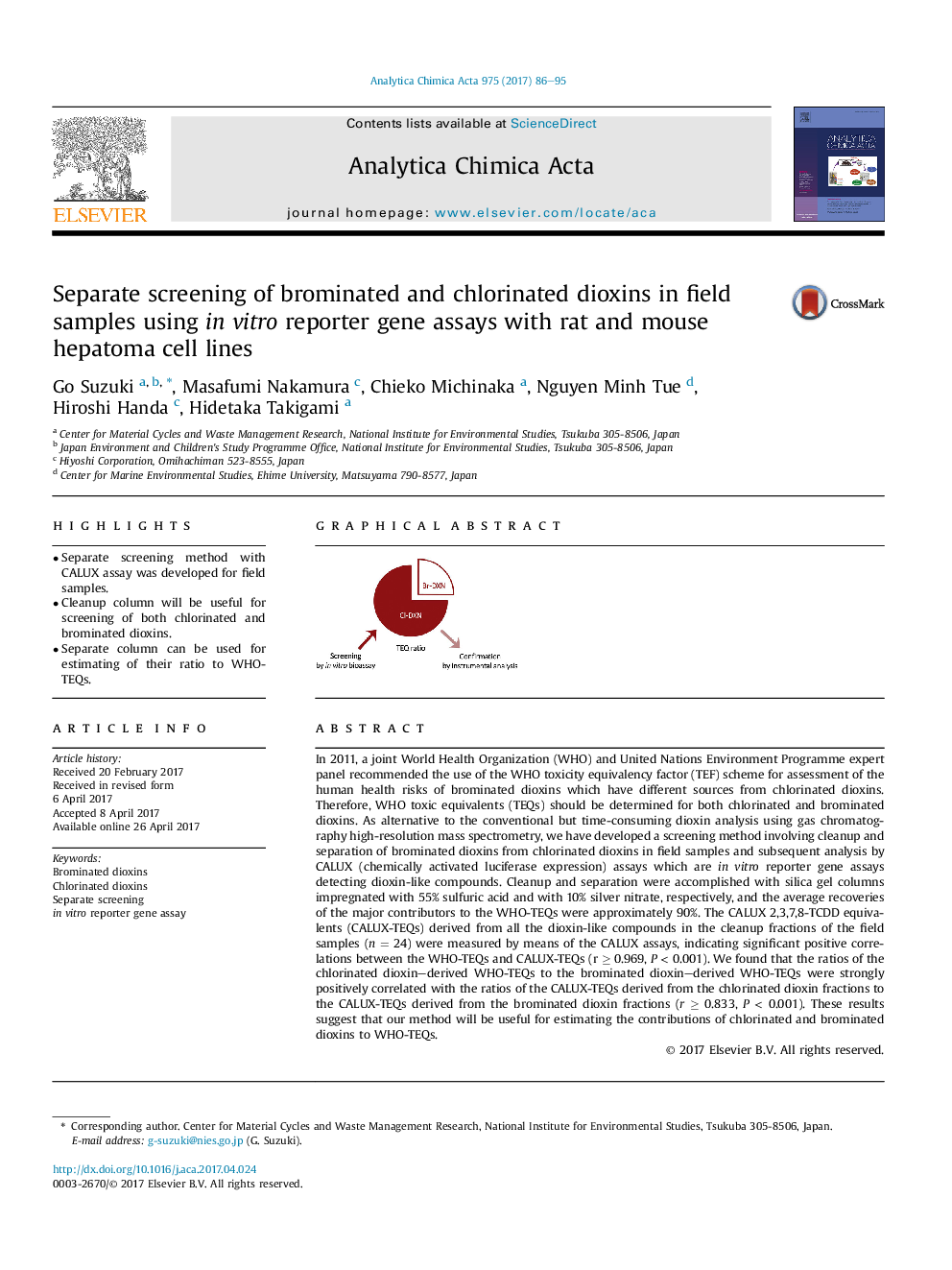| Article ID | Journal | Published Year | Pages | File Type |
|---|---|---|---|---|
| 5130840 | Analytica Chimica Acta | 2017 | 10 Pages |
â¢Separate screening method with CALUX assay was developed for field samples.â¢Cleanup column will be useful for screening of both chlorinated and brominated dioxins.â¢Separate column can be used for estimating of their ratio to WHO-TEQs.
In 2011, a joint World Health Organization (WHO) and United Nations Environment Programme expert panel recommended the use of the WHO toxicity equivalency factor (TEF) scheme for assessment of the human health risks of brominated dioxins which have different sources from chlorinated dioxins. Therefore, WHO toxic equivalents (TEQs) should be determined for both chlorinated and brominated dioxins. As alternative to the conventional but time-consuming dioxin analysis using gas chromatography high-resolution mass spectrometry, we have developed a screening method involving cleanup and separation of brominated dioxins from chlorinated dioxins in field samples and subsequent analysis by CALUX (chemically activated luciferase expression) assays which are in vitro reporter gene assays detecting dioxin-like compounds. Cleanup and separation were accomplished with silica gel columns impregnated with 55% sulfuric acid and with 10% silver nitrate, respectively, and the average recoveries of the major contributors to the WHO-TEQs were approximately 90%. The CALUX 2,3,7,8-TCDD equivalents (CALUX-TEQs) derived from all the dioxin-like compounds in the cleanup fractions of the field samples (n = 24) were measured by means of the CALUX assays, indicating significant positive correlations between the WHO-TEQs and CALUX-TEQs (r â¥Â 0.969, P < 0.001). We found that the ratios of the chlorinated dioxin-derived WHO-TEQs to the brominated dioxin-derived WHO-TEQs were strongly positively correlated with the ratios of the CALUX-TEQs derived from the chlorinated dioxin fractions to the CALUX-TEQs derived from the brominated dioxin fractions (r â¥Â 0.833, P < 0.001). These results suggest that our method will be useful for estimating the contributions of chlorinated and brominated dioxins to WHO-TEQs.
Graphical abstractDownload high-res image (124KB)Download full-size image
